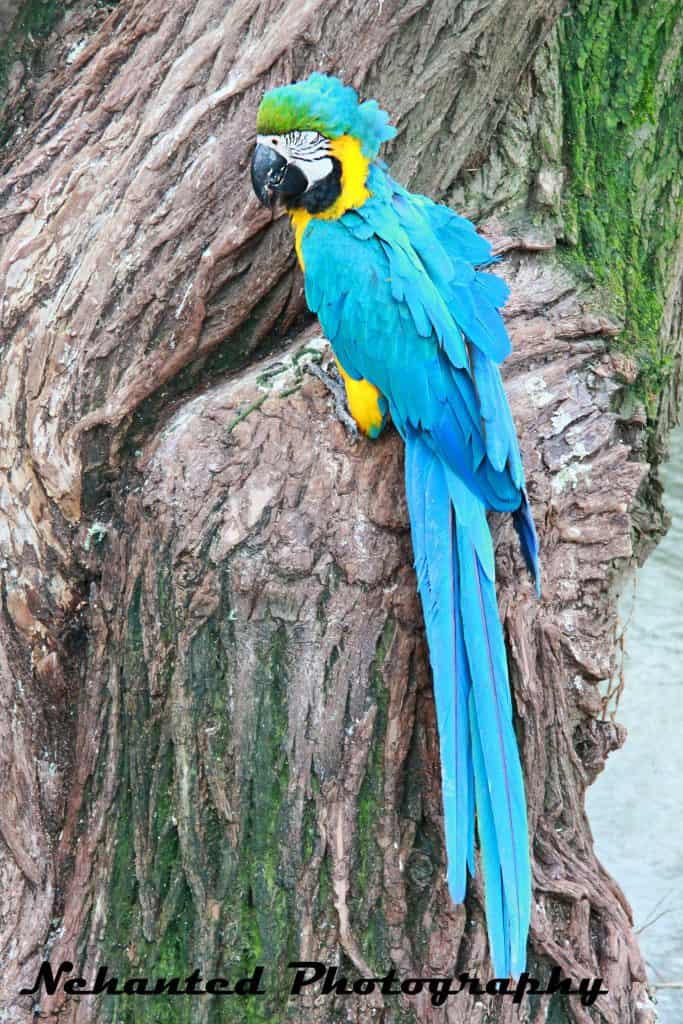
Blue and Gold Macaw Natural History
Size
The length of this bird averages between 76cm and 86cm reaching weights of 0.9kg to 1.3kg.
Habitat and Distribution
These birds live in the tropical woodlands of Brazil, Bolivia, Venezuela, Panama, Paraguay and Trinidad.
Age
These birds can live for 70 to 90 years on average.
Diet
Their diet is made up of at least 50% fruit and plant matter such as leaves, flowers and buds. Rest will always be made up of small amounts of seeds, nuts and insects. They have also been known to lick clay which is thought to neutralise the toxins from some of the fruits they eat as well as aiding digestion.
Groups and Breeding
These birds mate for life, with females laying 2 to 3 eggs in a tree hollow after mating which hatch after approximately 28 days.
Threats
This particular species of macaw is listed as least concern by conservation societies because they have a fairly large distribution range and are relatively well represented throughout their range. However this may change if the threat of illegal trapping for the pet trade and habitat destruction continue.
Interesting Facts
The strong beak of this macaw allows it to use this beak as a third foot, holding on to branches with its beak while it moves around the canopy.
The Macaws During Your Day Out in Kent
The macaws at Wingham Wildlife Park live in the long flight aviary opposite the Tropical House and come to us from a variety of backgrounds. Some of them came to the park from people who simply could not look after them any more, whilst others have come to us as rescues where the birds were taken away from their previous owners. As such you will find that some of our macaws still show some of the signs of their past (such as plucked feathers – although they all look much better today than when they first arrived, at which point some were almost entirely bald). Their names are Lapis, Lazvli, Athos, Porthos, Aramis and they live with our Scarlet Macaws Ding-Dong and Wanda as well as other parrots including African Greys, Double Yellow-headed Amazons and Sulphur Crested Cockatoos.
The more you know…
Want to know more about this animal? Check out our keeper blogs about them here.
Fantastic Feathers: But How and Why Are Birds So Colourful
Fantastic Feathers Part II: How Do Birds Care For Their Feathers?